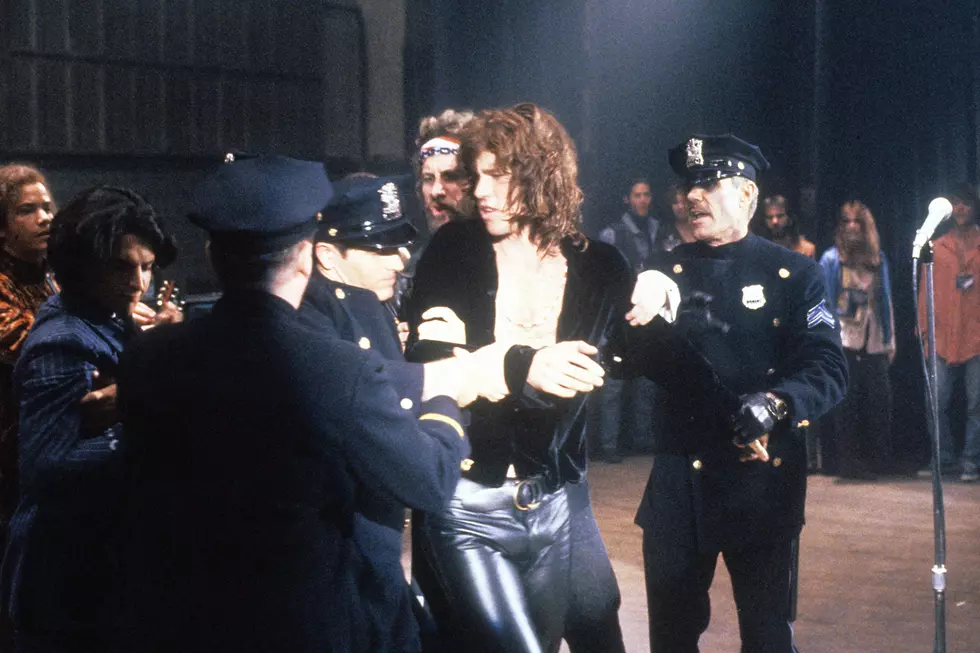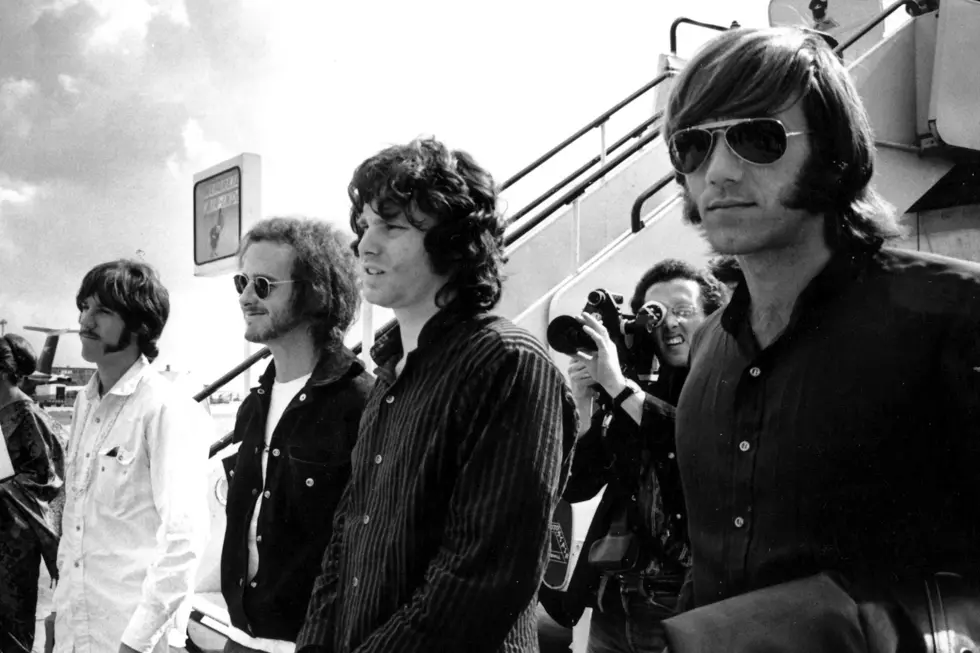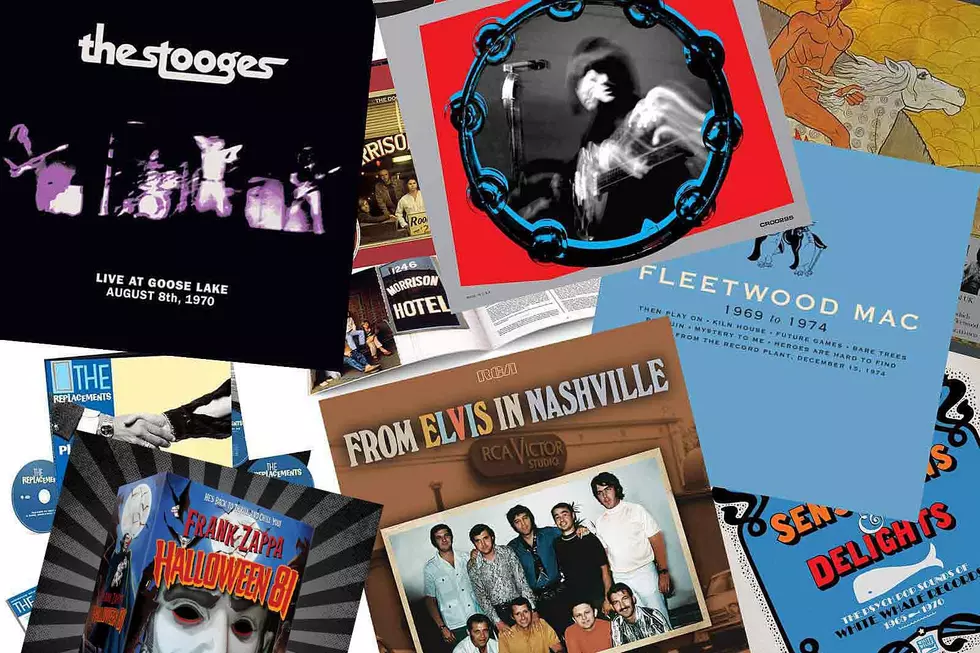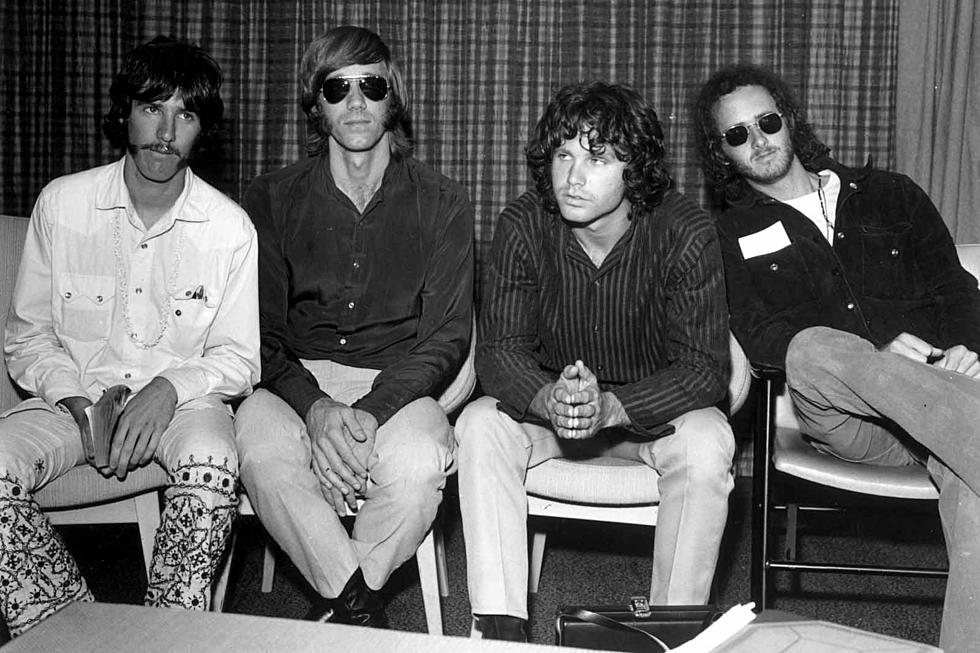
30 Years Ago: ‘The Doors’ Movie Finds Truth Battling Myth
One of the most significant things about rock 'n' roll is that the myths surrounding it often become more real than the truth.
This is the topic and – depending on where you stand – either the greatest asset or greatest downfall of Oliver Stone's movie The Doors, which was released on March 1, 1991.
On the surface, the film is a biopic of the Doors - or more accurately of Jim Morrison. It spends most of its time on the band's charismatic singer, reducing the rest of the group to little more than an outlet for his poetic and musical sensibilities.
Beneath this, however, lies an attempt on the part of director Stone to come to grips with the whole decade of the '60s. And this is where the controversy begins.
Watch 'The Doors' Trailer
The movie opens with a family driving through the desert in the late '50s. They come across a car crash, and Jim (here a kid, but played in the rest of the film as an adult by Val Kilmer) sees an elderly Native American grievously injured by the side of the road. A mystical tone is established immediately: This old man, and the American desert more broadly, will become a kind of cosmic iconography that Morrison flashes back to for the rest of his life.
The scene then shifts to Venice Beach and the UCLA campus, circa 1965. Morrison is writing poetry and taking film classes. A budding world-changer, he meets keyboardist Ray Manzarek (Kyle MacLachlan) and they decide to form a band. They recruit guitarist Robby Krieger (Frank Whaley) and drummer John Densmore (Kevin Dillon); also present on the scene is Morrison's girlfriend, Pamela Courson (Meg Ryan), a spiritual explorer caught up in the singer's allure and the reject-all-orthodoxy spirit of the era.
After Morrison convinces his bandmates that the road to rock 'n' roll glory runs through psychedelic drug use and takes them all out to the desert to trip, they begin their assault on the Los Angeles club scene. Their sonic assault combined with Morrison's aggressive onstage sexual theatrics make them popular, but that also gets them kicked out of their home base at the Whisky a Go Go. Their controversial approach also lands them their first record deal at Elektra.
Watch the Doors Play 'Unknown Soldier' Live in 1968
What follows is (at least in Stone's telling) one of the great drug-fueled, obscenity-laden meteoric rises in music history. They promise to change the lyrics of "Light My Fire" for a performance on The Ed Sullivan Show – the original "girl, we couldn't get much higher" was deemed too controversial a drug reference for genteel American audiences – only to have Morrison renege and sing the original words, which got the Doors permanently banned from the program.
They play to increasingly larger venues as Morrison's behavior gets increasingly erratic. He goes on hallucinogenic benders, throws tantrums, misses recording sessions, shows up late for shows and gets arrested for exposing himself onstage. He also, importantly, begins to fall under his own spell. He crowns himself "the Lizard King" and increasingly mistakes his drug and alcohol addiction for psychedelic revelation.
He consorts with rock journalist Patricia Kennealy (Kathleen Quinlan), who's into druggy witchcraft, and engages in a kind of wiccan marriage with her. Any notion of rock 'n' roll or poetry is forgotten in favor of a kind of celestial self-importance.
All of this descent is overseen by the wise old spirit invoked by the movie's opening scene in the desert. Eventually, things fall apart. Morrison goes on trial for the indecent-exposure incident and declares himself no longer a part of the band. He reconciles with Courson, and they move to Paris in hopes of escaping the now-toxic pressures of fame, but it's no use. Morrison ends up dead in the bathtub from a (perhaps drug-induced) heart failure in 1971 at the age of 27. The whole magical, tragic carnival lasted less than five years.
Watch Val Kilmer Sing in a Clip From 'The Doors'
In some senses, the film is an accurate one. It's faithful to the main lines of the band's story, and Kilmer has been nearly universally lauded for his eerie ability to portray Morrison.
In a 1990 interview, Krieger noted that Kilmer melted into character so perfectly that on-set "I even called him 'Jim' a few times without meaning to." And Kilmer voiced virtually all of the onscreen singing in the film, managing to sound extraordinarily reminiscent of Morrison.
In many ways, though, The Doors makes no real attempt at verisimilitude in its details. It misstates historical events for emphasis: In the Ed Sullivan scene, for example, Kilmer sticks his face in the camera to emphasize the "much higher" line, rather than simply singing it. It creates characters who are amalgams of real people and rearranges chronologies.
Although Densmore and Krieger both served as advisors on the movie, Manzarek disliked Stone's approach so much that he refused to be involved. In a 1991 interview with Gary James, he blasted Stone for depicting Morrison as little more than a drunk, calling the film "a jive-ass thing to go," explaining that the Morrison on the screen was nowhere near to being "the guy that I knew."
Watch the Doors Play 'The End' Live in 1968
But Oliver Stone, here and throughout his career, has never been about accuracy so much as myth and metaphor. In films from Wall Street and Platoon to Natural Born Killers, for better or worse he has tried to depict his generation's experience of America symbolically instead of historically. Here, he presents the late '60s as a parable about the dangers of uncompromising exploration.
In his vision, what began as an honest attempt at spiritual transformation ran aground, perhaps unavoidably, on the shoals of real life. Drugs can lead to addiction, fame can lead to indulgence and the world is not kind to purists.
The name of the band famously comes from a book in which Aldous Huxley celebrated his experiences on mescaline, called The Doors of Perception. This title itself is a gloss on a line from the visionary poet William Blake: "If the doors of perception were cleansed, every thing would appear to man as it is: infinite. For man has closed himself up, till he sees all things thro' narrow chinks of his cavern." Which is to say that for Blake, the danger doesn't lie in getting the facts wrong but in remaining closed up in our caverns rather than trying to see the infinite that's really out there: endless, terrifying and dangerous to explore.
Stone seems to share this opinion and to think that the myths of rock 'n' roll embody that exploration. Cold comfort, perhaps, for people who care about the way things really happened, but it sure makes for entertaining movies.
The Best Rock Movie From Every Year: 1955-2020
More From 98.7 The Bomb










